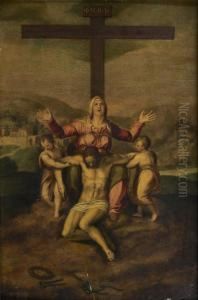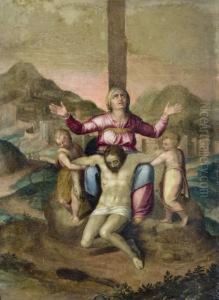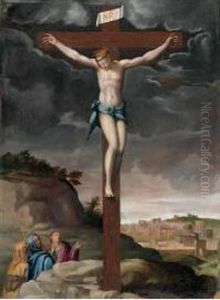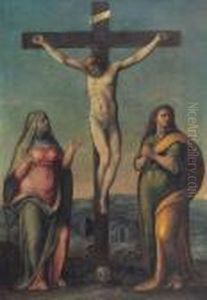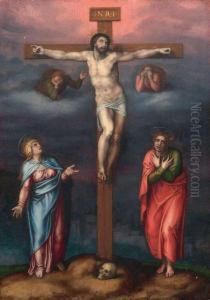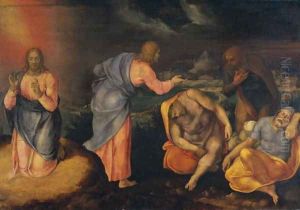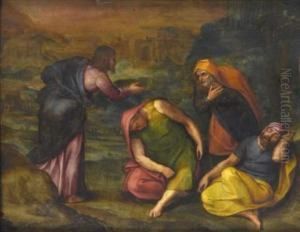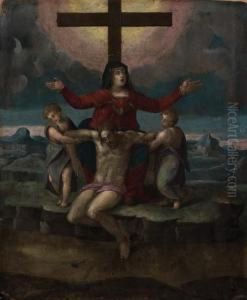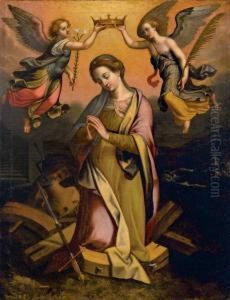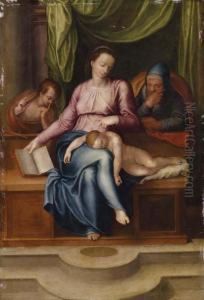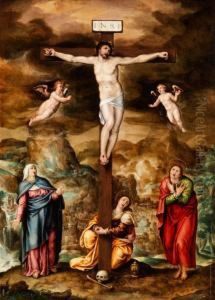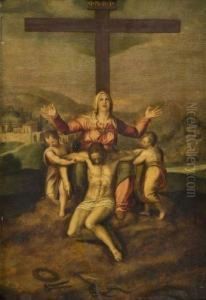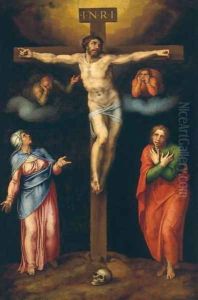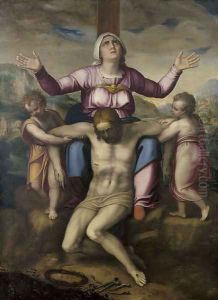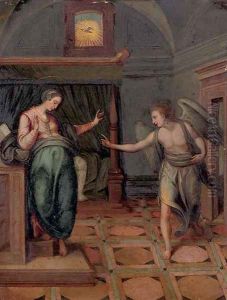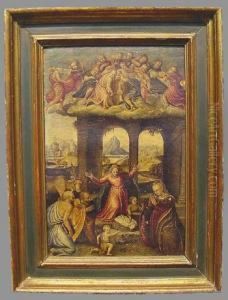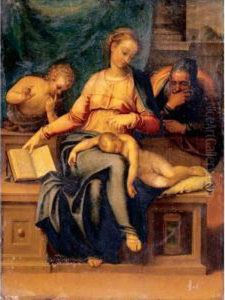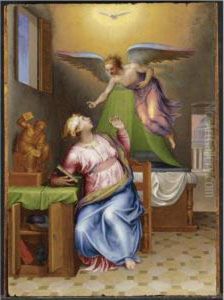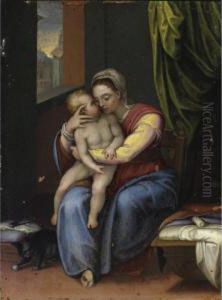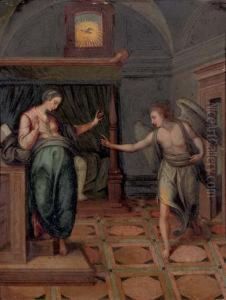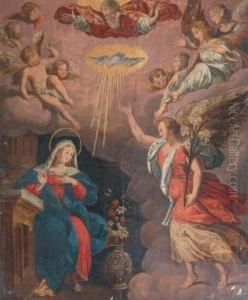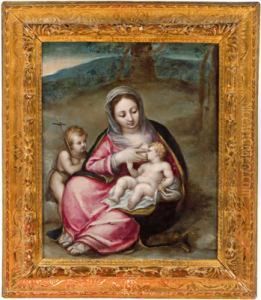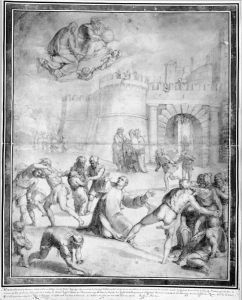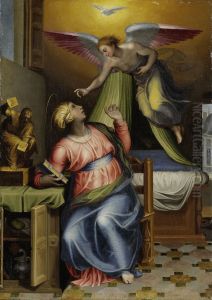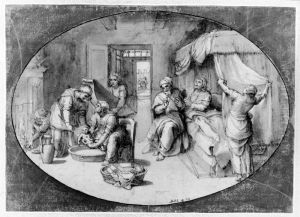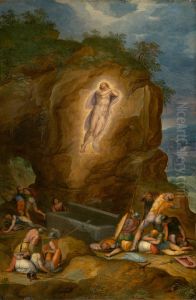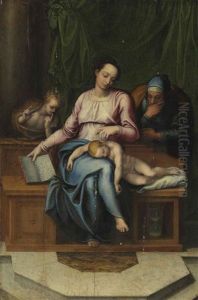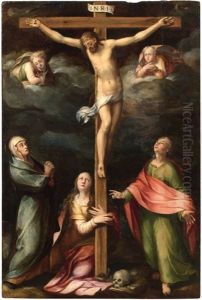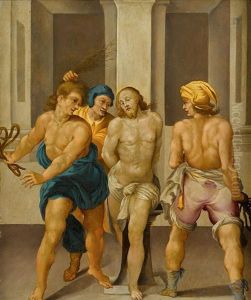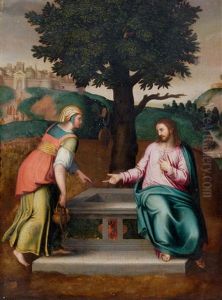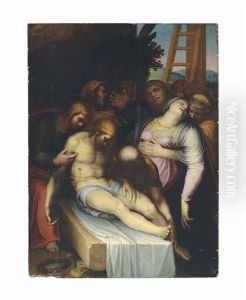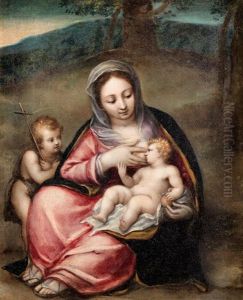Marcello Venusti Paintings
Marcello Venusti was an Italian Mannerist painter active during the Renaissance period. Born in either 1512 or 1515 in Como, Lombardy, he developed his artistic skills in the bustling environment of Rome. He is known largely for his close association with the renowned artist Michelangelo Buonarroti. Venusti's work was profoundly influenced by Michelangelo, and he is often cited as one of the key interpreters of the master's ideas.
Venusti's early career is not well-documented, but by the mid-16th century, he had established himself in Rome. His style is characterized by a precise and delicate technique, a result of his deep study of Michelangelo's drawings. Unlike Michelangelo, Venusti had a preference for small-scale works and was particularly skilled in oil painting, a medium that Michelangelo used less frequently.
One of Venusti's most notable works is the 'Copy of the Last Judgment' after Michelangelo's fresco in the Sistine Chapel. Commissioned by Cardinal Alessandro Farnese, this painting is significant as it represents one of the earliest known copies of 'The Last Judgment' and offers insight into how Michelangelo's contemporaries viewed his masterpiece. Venusti's version is more modest and conforms to the norms of propriety of the time, which contrasts with the more controversial aspects of Michelangelo's original.
Apart from reproducing Michelangelo's works, Venusti also created original compositions. His religious paintings are imbued with a sense of piety and often feature detailed architectural backgrounds, showcasing his versatility and the ability to merge different influences into a cohesive style.
Despite his talent, Marcello Venusti remains a somewhat obscure figure in the pantheon of Renaissance artists. However, his contributions to the art of the period, especially his role in disseminating Michelangelo's designs and his own refined oil paintings, have secured him a respectful place in the history of Italian art. Venusti passed away in 1579, leaving behind a legacy that continues to be appreciated by art historians and enthusiasts alike.
